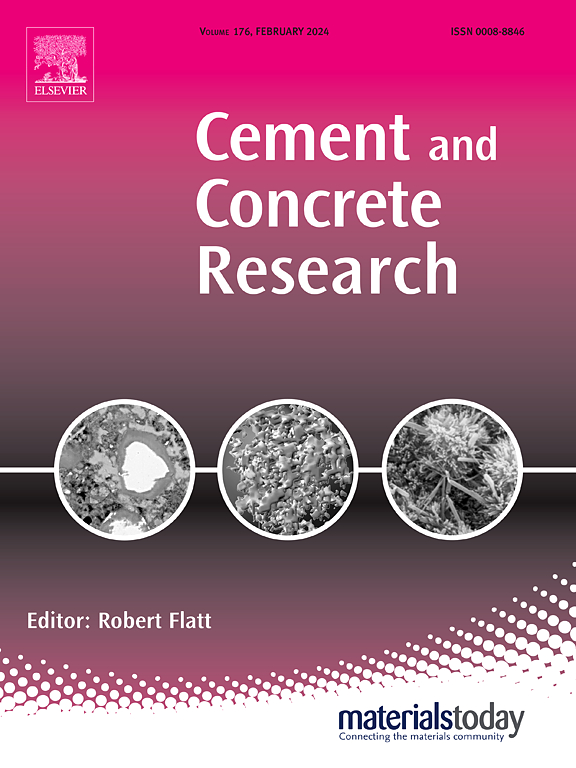How siderite (FeCO3) enhances the sulfate resistance of cementitious systems
IF 13.1
1区 工程技术
Q1 CONSTRUCTION & BUILDING TECHNOLOGY
引用次数: 0
Abstract
Siderite has recently emerged as a promising reactive SCM in Portland cement systems, with potential to enhance concrete durability. This study systematically investigates the resistance of siderite-containing mortars and pastes to external sulfate attack by evaluating both their expansion behavior and chemical stability in Na2SO4 solutions. Microstructural, mineralogical, and chemical changes were thoroughly characterized. When used either as a fine aggregate or as a partial binder replacement (10–50 wt%), siderite significantly improved the sulfate resistance of OPC systems. Remarkably, OPC–FeCO3 blends exhibited lower expansion than even highly sulfate-resistant cements such as C3A-free CEM I SR-0 and CEM III/B. This enhanced resistance is attributed to the partial consumption of portlandite, the stabilization of primary ettringite during hydration, and the formation of less expansive Fe-rich ettringite during sulfate exposure. Our findings highlight how highly relevant durability issues of OPC can be improved with readily available natural Fe carbonates.
菱铁矿(FeCO3)如何增强胶凝体系的抗硫酸盐性
菱铁矿最近作为一种很有前途的反应性SCM出现在波特兰水泥系统中,具有提高混凝土耐久性的潜力。本研究通过评估含菱铁矿砂浆和膏体在Na2SO4溶液中的膨胀行为和化学稳定性,系统地研究了它们对外部硫酸盐侵蚀的抗性。显微结构、矿物学和化学变化得到了全面的表征。当用作细骨料或部分替代粘合剂(10-50 wt%)时,菱铁矿显著提高了OPC体系的抗硫酸盐性。值得注意的是,OPC-FeCO3共混物的膨胀率甚至低于不含c3a的CEM I SR-0和CEM III/B等高抗硫酸盐水泥。这种增强的抗性是由于波特兰铁矿的部分消耗,水化过程中原生钙矾石的稳定,以及硫酸盐暴露过程中形成的膨胀较小的富铁钙矾石。我们的研究结果强调了与OPC高度相关的耐久性问题可以用现成的天然碳酸铁来改善。
本文章由计算机程序翻译,如有差异,请以英文原文为准。
求助全文
约1分钟内获得全文
求助全文
来源期刊

Cement and Concrete Research
工程技术-材料科学:综合
CiteScore
20.90
自引率
12.30%
发文量
318
审稿时长
53 days
期刊介绍:
Cement and Concrete Research is dedicated to publishing top-notch research on the materials science and engineering of cement, cement composites, mortars, concrete, and related materials incorporating cement or other mineral binders. The journal prioritizes reporting significant findings in research on the properties and performance of cementitious materials. It also covers novel experimental techniques, the latest analytical and modeling methods, examination and diagnosis of actual cement and concrete structures, and the exploration of potential improvements in materials.
 求助内容:
求助内容: 应助结果提醒方式:
应助结果提醒方式:


